Pulling Back the Curtain on Paralympic Swimming With National A Team Member Ahalya Lettenberger
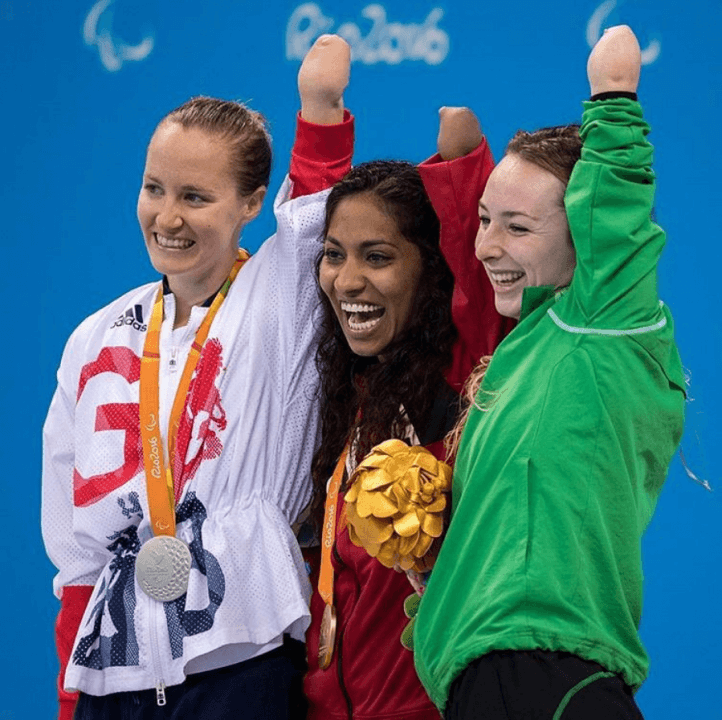
By Claire Russell, A Swimming World College Intern.
Tokyo 2020 is right around the corner, and swim fans around the world are gearing up for thrilling races. Yet most people don’t associate the Paralympic Games with the broadly televised Summer Olympic Games. After years of battling for recognition and equality with able-bodied athletes, Paralympians in the United States are celebrating a recent victory: the US Olympic Committee changed its name to the US Olympic and Paralympic Committee. This change represents Team USA’s drive to create an inclusive environment.
While the Paralympics have been gaining much well-deserved recognition as of late, many of us remain in the dark regarding what the meet entails. It’s time to pull back the curtain on Paralympic swimming so that we can best support and include these athletes.
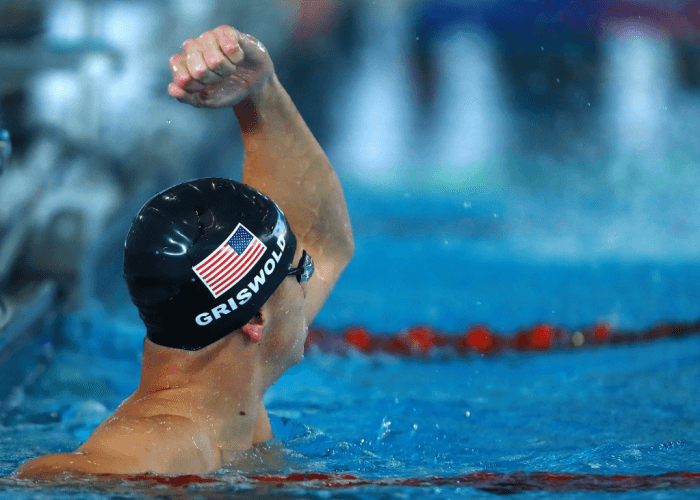
Twitter, @USParaswimming
The swimming portion of the 2020 Paralympic Games will begin on August 26 and end on September 4. The 2020 Tokyo Paralympic Team has been chosen by the swimmer’s performances in the Paralympic trials weeks before. In the same as the Olympic Games, the stands will be packed with fans proudly cheering and waving their home flags. An exciting buzz of intense conversation will echo around the pool. “Who’s going to take the gold? Can she make a comeback? Which country has the fastest relay?” However, the Paralympic Competition Schedule differs from that of the Olympics, so you will hear some different predictions and terms. “Who will win the gold for S7 in back?”
These athletes have sacrificed, persevered and overcome many obstacles for the opportunity to compete at the most elite level.
To help better understand a Paralympic meet and participate in the fun, Swimming World met up with National A Team Member Ahalya Lettenberger for a quick overview. Lettenberger will represent Team USA in the upcoming 2019 World Para Swimming Championships in London. She has also participated in the 2018 Para Pan Pacific Championships and is a 2020 Tokyo Paralympic hopeful. She explained the classification breakdown, the meet format and made sure to emphasize that the Paralympic swimmers will be as equally competitive and fun to watch as “able bodied athletes” (athletes who are not impaired).
The Classification Breakdown
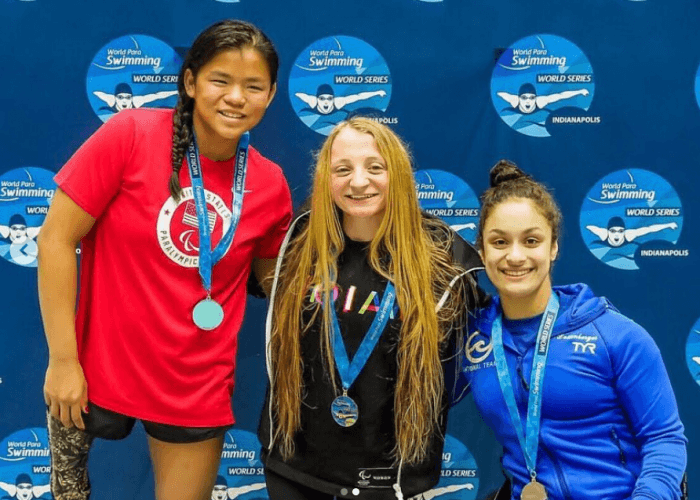
Photo Courtesy: Instagram, @alett19
Ahalya started off by explaining the meet format and classification process of a typical para meet.
“There are 14 different classifications that an athlete can have. It’s broken down into classes S1-S14 for freestyle, backstroke, and butterfly. The lower the number, the more severe the impairment. Classes S1-S10 are physical impairments, S11-13 are visual, and S14 are intellectual impairments.” -Ahalya Lettenberger
An athlete can have a different class for the individual medley and breaststroke events. The individual medley classification would have SM in front of the number, and breaststroke would have a SB instead of the “S” used in the freestyle, backstroke and butterfly events.
For example, an athlete who is completely blind would have a classification of S11. A person who may be missing foot or hand could have a class of S10. Lettenberger has the diagnosis of arthrogryposis amyoplasia, which only allows her to have a little control of her legs. She swims in the class of S7 and SM7 classes but swims SB6 for breaststroke events, because breaststroke requires more complicated leg movements.
The Paralympic Meet Format
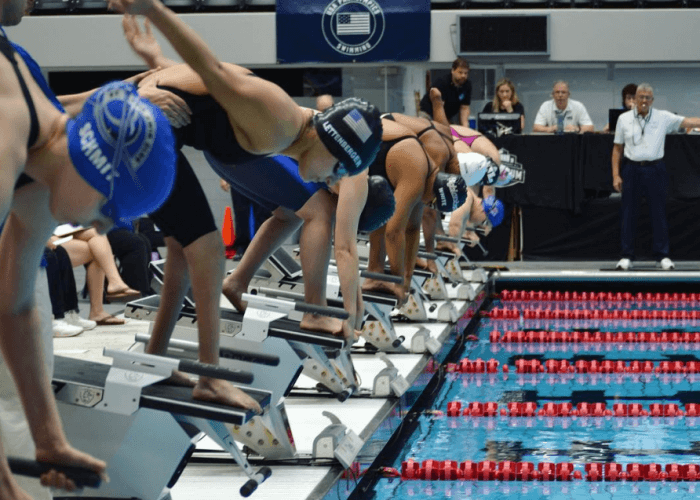
Photo Courtesy: Instagram, @usparaswimming
Para meets have a slightly different event lineup than a typical “able bodied” meet. The lower number classes have the opportunity to swim the 50, 100, and 200 freestyle events. They also have the chance to swim 50s of every stroke in addition to a 150 IM that does not include butterfly. The higher numbered classes have the option to swim longer events. They have the chance to swim 50, 100 and 400 free along with 100s of each stroke and the 200 IM. Typically – since there are 14 different classes – a para meet would run 14 different heats for each event.
Overall Experience
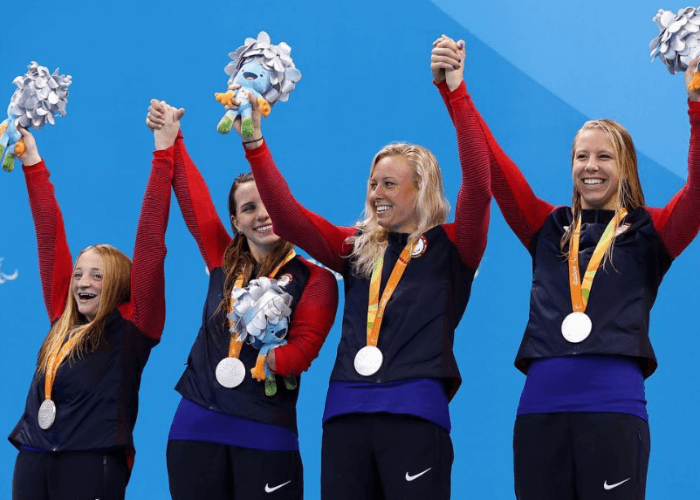
Photo Courtesy: Instagram, @Usparaswimming
Watching – or even better, attending – a Paralympic meet is something that should be on everyone’s bucket list. If you are a true swimming fan, it will surely be an inspirational experience. Not only does it offer the same level of elite competition as the “able bodied” meets, but it also tacks on an extra sense of community and motivation. National A Team Member Ahalya Lettenberger swims and competes against both able bodied and Paralympic swimmers in her swimming career. She reveals that at Para meets,
“We’ve become a big community, because we’ve all gone through different experiences and overcome certain obstacles, so it brings us all together. This doesn’t apply to just the US. The close family feel also applies to international meets. You see different things across the deck that you won’t see any other meet. You’ll see something or someone that will inspire and motivate you in every corner of the pool deck. Every swimmer, parent, and fan are more empathetic and more supportive of each other. In some of the less qualified meets, you’ll see people swimming for the first time, and everyone will be cheering them on. Everyone is definitely competitive, but there is still that tight-knit community feel.”
Upcoming Meets
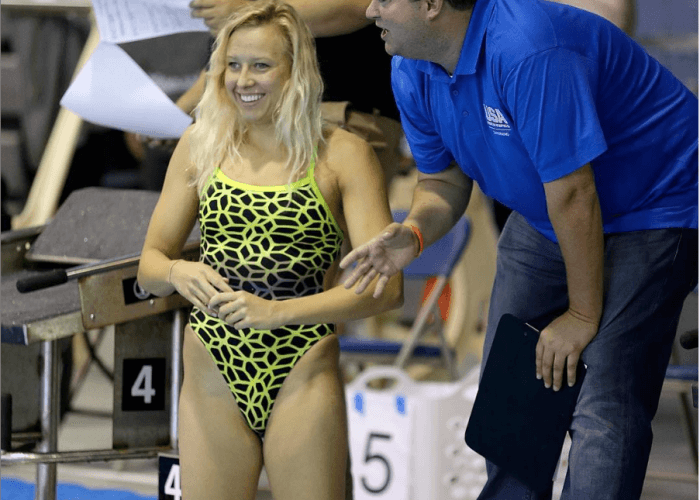
Photo Courtesy: Instagram, @usparaswimming
If you want to watch some of the fastest elite para-swimmers compete in the upcoming year, many will be racing in the 2019 Para Swim World Championships in London and the Parapan American Games in Lima, Peru. Ultimately, they will be training for and hope to become one of the select few who gets the chance to participate in the 2020 Paralympic Games in Tokyo.
-Commentaries are the opinion of the author and do not necessarily reflect the views of Swimming World Magazine nor its staff.




Well done Claire!!!
Good luck Ahalya ! Everyone back home will be routing for you !!
Very informative, great job!
Way to go MeiMei, so proud of you!
MeiMei we are so proud of you! Way to go!